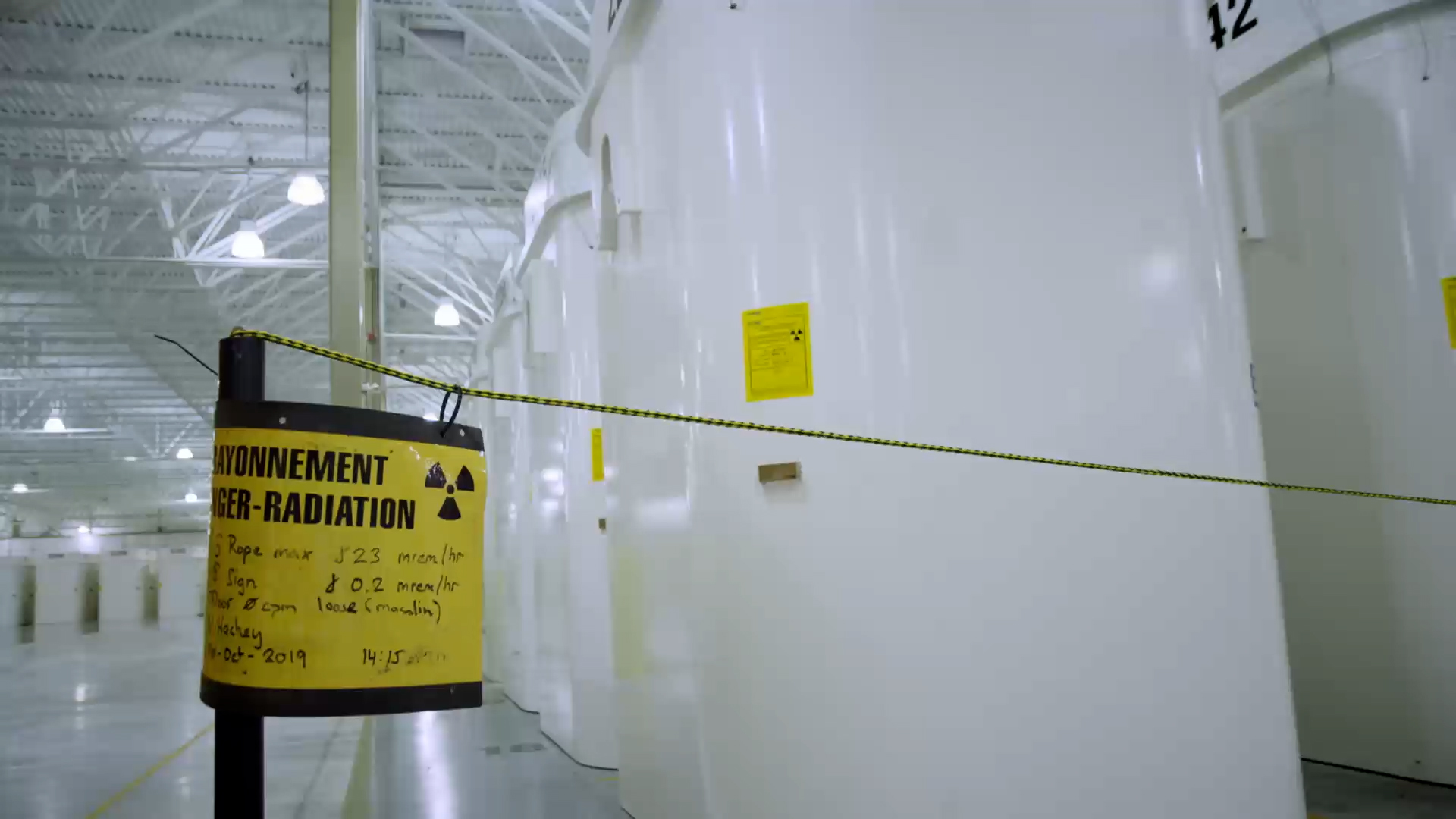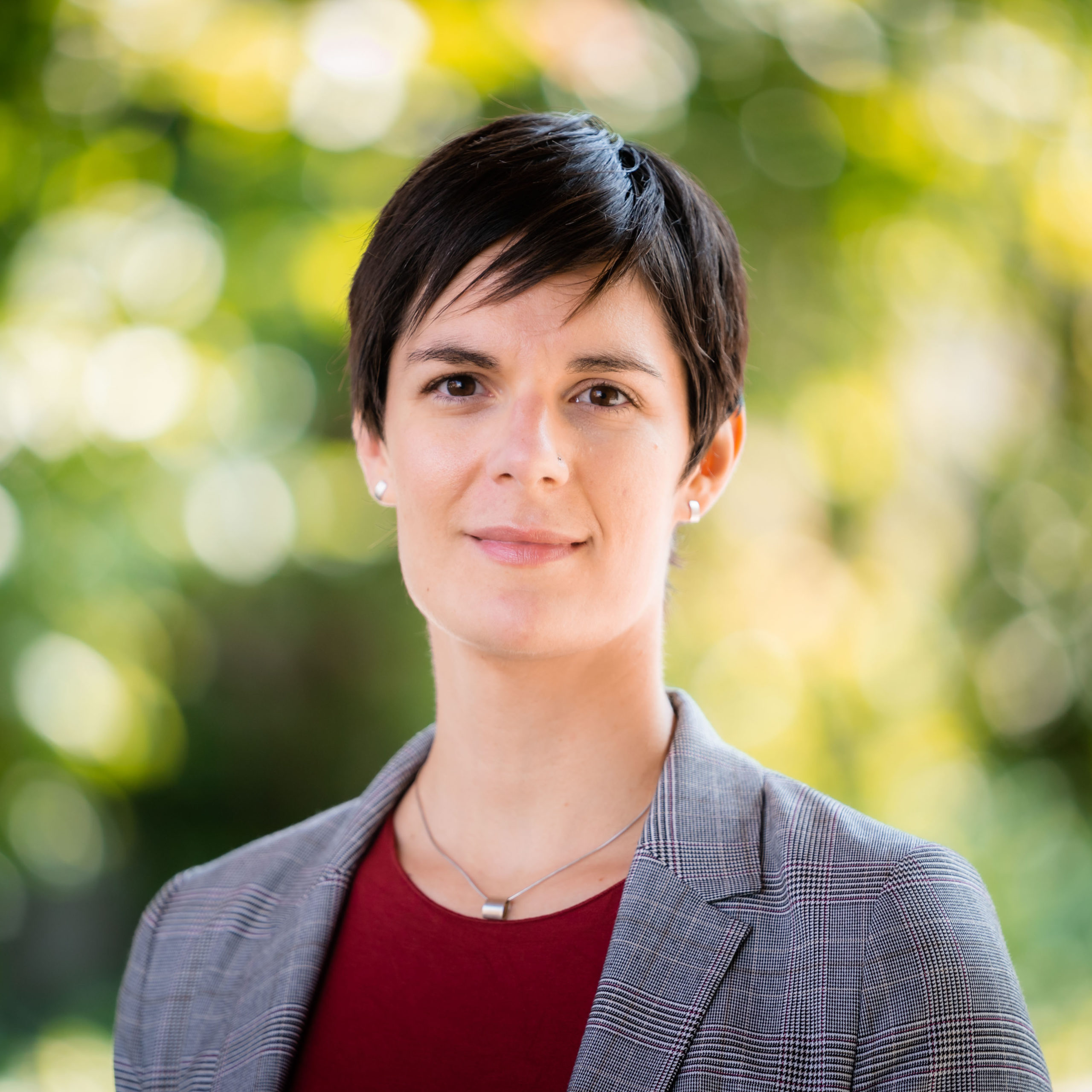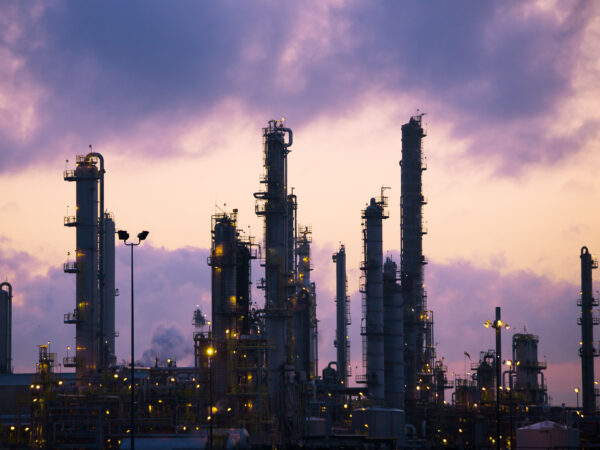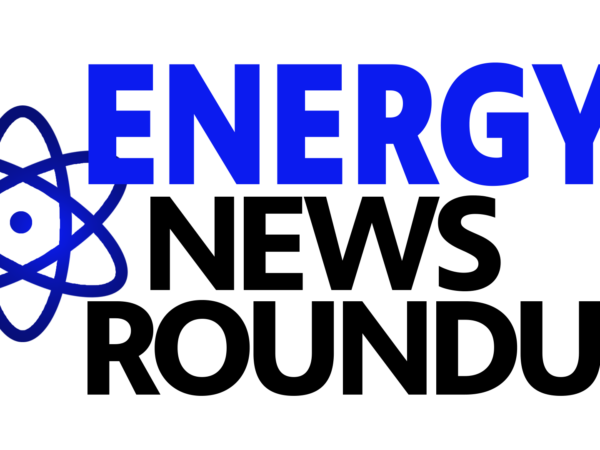
Denia Djokić first got interested in nuclear engineering because of climate change. That was nearly two decades ago when she was a college student at UC Berkeley and learned how energy issues were central to create a more sustainable planet.
“When we’re 21, we want to go out and save the world,” she said.
In the decades since that decision, her goals have changed. Back then, she wanted to find a way to work around the issue of nuclear waste and the barrier it presented to the adoption of nuclear energy. Now she’s focusing on the social and environmental justice aspects of nuclear technology and “more equitable and just” ways of engaging with the community.
It’s a specialty particularly relevant to Great Lakes communities with the current cross-border debate over the safety of two proposed nuclear waste storage site in Ontario miles from the Lake Huron shoreline.
Watch Great Lakes Now’s episode exploring this debate here:
Djokić is a research scientist with the University of Michigan’s nuclear engineering and radiological sciences department, with the Fastest Path to Zero Initiative, a project aimed at supporting communities with planning and pursuing climate goals. Djokić is also a Levenick Resident Scholar in Sustainability Leadership with the Institute for Sustainability, Energy, and Environment at the University of Illinois at Urbana-Champaign.
Great Lakes Now’s Natasha Blakely recently spoke with Djokić, who shared her thoughts on the public perception of the nuclear industry, whether the proposed deep geological repository in Ontario is safe, and what loss of trust in a community can mean for projects like the proposed nuclear waste storage sites in Ontario.
The interview was recorded, transcribed and edited for length and clarity.
Great Lakes Now: Why are people so afraid of nuclear? Should they be?
Denia Djokić: Yeah, the “should” is a loaded question, right? And the “why” is an easier question to answer.

Denia Djokić
It’s almost impossible, even to this day, to uncouple in the public eye nuclear energy for electricity-generation purposes from nuclear weapons technology. I think that this entanglement with nuclear weapons – originally reinforced through media throughout the decades, on top of which we’ve had several nuclear power plant accidents – just keeps reinforcing that fear.
Going back to your question about “should,” the public I think is justifiably fearful. It’s tricky to navigate, because this is sort of like the vaccine debate, right? There’s a lot of misinformation about radiation out there. But it plays into fear that is actually legitimate concern that, at its core, comes from the lack of trust that has come from the mistakes the nuclear industry has made.
So, what I’m trying to say is that there are some illegitimate fears in terms of conceived and misplaced notions of what radiation does—to take an extreme example, you’re not going to grow a second head if you are exposed to radiation. It’s just not true. But to mistrust the nuclear engineers, the nuclear industry, because of its blunders in the past and because of large-scale nuclear power plant accidents such as Fukushima and Chernobyl, or even because of all the uncertainties that even engineers don’t know how to fix or keep the public safe from, is understandable. It’s kind of like the vaccines again —there’s always a chance that something won’t work with 100% certainty. But that’s the way it is, we live in a complex world, that’s part of our modernity. Because of that, I think that some fears surrounding nuclear energy are legitimate.
GLN: More on that idea of risk and safety, is the deep geological repository method of storing waste actually safe? Does it actually work?
DD: There are many ways to answer that question. One answer is we don’t necessarily know, because each deep geologic repository has different geological conditions. We can, however, learn from existing operating repositories such as WIPP, the Waste Isolation Pilot Plant in New Mexico, even though that is a different type of radioactive waste stored in a very different geological medium.
Engineers will tell you, in the context of WIPP, WIPP is safe, because radionuclides don’t move over very long timespans such as hundreds of millions of years. We’ve been able to show to a high degree of certainty by looking at the geologic transport of different elements in that particular rock formation in the past, and we’ve proven that things don’t move very far over long periods of time, which means that burying that type of waste in that type of rock is very safe over geologic timescales. But then if you start googling about WIPP, you will see that actually they had an accident seven years ago where someone made an administrative mistake and ordered organic kitty litter instead of inorganic kitty litter, and a waste container exploded underground.
So, then the question of safety can be conceived of in many ways. Does “safe” mean while you’re operating it? Does “safety” mean to the workers? Does “safety” mean to the biosphere in 2 million years? What is safety? WIPP is safe to a high degree of certainty in terms of radionuclide isolation from the biosphere, but is it safe from human error as you make decisions about how to package the waste? And how much can a repository like WIPP even tell us about the safety of the proposed deep geological repositories in Ontario, which are designed to host a very different type of radioactive waste – commercial spent nuclear fuel straight out of the reactor, in contrast to WIPP’s defense-related waste –In very different geologic conditions? Again, complex systems of how you manage certain technologies are never 100% safe, right? The question here is more along the lines of, what is an acceptable level of safety and who gets to decide what that means?
The reason I took WIPP as an example was to just point to one of the only fully operating deep geologic repositories that we know, since we have limited operating experience of deep geologic repositories worldwide. We might very soon have better knowledge of operating a deep geologic repository from commercial spent nuclear fuel from Sweden and Finland, but, again, those repositories are being built in a different geologic formation than the ones in Ontario.
How these deep geological repositories get designed and how safety gets evaluated is by studying the geologic information until you can’t anymore, with all the caveats and the uncertainties that I was explaining earlier. As an engineer, as best as you can, as responsibly as you can, you try and model the behavior of the waste inside the waste canister deep under the rock bed or whatever geologic formation you’re working with. You have all these geochemists, environmental engineers, hydrologists and other experts that all pool their knowledge to try and, not predict, but just understand the potential behavior of how likely it is that the radionuclides will get released over a certain period of time, in concert with the regulator.
In terms of trusting the engineers to really come up with the most robust design possible, with all the technical knowledge that we have, I as a nuclear engineer, I trust that, but I understand that someone in the public doesn’t trust their nuclear waste being next to a water source.
GLN: So that actually leads pretty well into my next question, which was, so let’s say, bad stuff happens, and it gets released, and it gets into the water. What would the result of that be?
DD: Both of the proposed sites are inland, about 30 miles from the shores of Lake Huron, so the real question is more about timeframes — how long until radionuclides might reach the water? And that timeframe is exactly what the repository design is supposed to prolong as much as possible.
Let’s consider several scenarios on different timescales just as a rough thought experiment. In the near term, the operational phase of the geologic repository, you can maybe envision an accident and maybe there would be some local contamination in the community itself. It is very unlikely to reach the shores of Lake Huron on a timescale that makes any sense. So I am going to put my technical hat on again and say that might be enough of a buffer. In such a scenario, no one for generations would detect radionuclides in Lake Huron.
But in going back to the timescales question, in the long, long, long term, like hundreds of thousands of years, a waste canister placed underground will inevitably fail due to water underground corroding the waste canister, and radionuclides will likely make their way into the water table and into Lake Huron. If you have enough engineered barriers in your repository, you can delay the point at which the waste canister fails. The idea is to delay the breaking of the waste canister for as long as possible so that by the time that happens, most of the radionuclides have decayed. It’s like a race against time. Radioactive waste decays and does disappear eventually, it just takes an absurdly long amount of time.
However, I will say that it’s kind of a fallacy to think about how long we can sequester radionuclides underground, because what actually matters is who gets to be part of the decisions. Are the power relationships between the community, the industry and the government taken into consideration where everyone is respected, where everyone’s views are heard, where everyone is communicating in a way that makes them feel good? This is a very un-engineering thing to say as well, but it’s really, really important in these siting processes.
So, at the end of the day, the safety of the geologic repository as constructed by engineers is very important, but it’s secondary to questions of fairness in the siting process.
GLN: Our October episode is adapted from the TV Ontario program “Political Blind Date, which brought together former mayor of Flint Karen Weaver and Mitch Twolan, the mayor of Huron-Kinloss, to talk about nuclear. He was in favor of the deep geological repository, but she was kind of hesitant because of that history of Flint with the drinking water contamination. So how are you supposed to approach a situation like that where you have people who, like you said, have genuine, legitimate fears about their drinking water being contaminated, even if everyone promises it’s going to be safe?
DD: I think once you have a loss of trust in the authorities that are supposed to provide you basic services and keep you safe, especially if the social groups that have been historically less taken care of than others have been racialized or otherwise marginalized, I think that you as an authority need to recognize that this is not a place to be exacerbating a community’s recent trauma with another project that it has no say in.
And it gets really complicated because Flint is not in Canada, and Canada’s Nuclear Waste Management Organization doesn’t have anything to do with the municipality of Flint and what happened there. But I think we need to be bolder and more creative in terms of who gets to be part of this decision, and national borders are kind of arbitrary when you’re talking about something as basic as a safe water supply. So we have to be creative about international and cross-border dialogue about projects such as this repository, and having certain authorities really understand the local and regional realities, even if it wasn’t their fault that Flint’s water was contaminated. The issue is still first and foremost a question of environmental justice.
It shouldn’t be thought about in terms of “what sociopolitical barriers can we remove for siting purposes”, it should be thought about as a social and environmental justice question. And independent of national borders, authorities need to proceed with care about what they do, regardless of whether issues might be technically unrelated, because you’re still operating on a trust deficit in the region.
I think when there’s no trust between communities and authorities you can’t do anything, so the barrier sort of instrumental argument actually does apply. But the justice-centered question is whether this the right thing to do for this region, for this community. In the context of Flint’s very recent water safety trauma, no, it’s not the right thing to do, and I think those are the questions that are more important than the technical ones.
And the same thing with the Saugeen Ojibway Nation rejecting the Ontario Power Generation’s proposed deep geological repository near the Bruce nuclear power plant. When you interpolate back hundreds of years and you understand the region’s colonial context, then of course they were going to reject this plan — there’s very little to no trust between First Nations and the government, and it had been eroded for centuries before the nuclear industry even came to exist. Though the Flint case is recent history, it is also resting on top of centuries of accumulated racial injustices in the United States. Similarly, in the context of the Saugeen Ojibway Nation and other Tribal Nations in the region, centuries of colonialism have been ignored in the siting of big nuclear-related projects such as a geologic repository. The Yucca Mountain Repository story is slightly similar, where the Western Shoshone’s lands were being contaminated with radionuclides by the United States government for decades due to nuclear weapons tests at the Nevada test site, and the siting governance approaches for the Yucca Mountain Repository, located right next to the Nevada Test site, didn’t take that colonial reality into account.
This lack of understanding of where the trust deficit comes from is common in the nuclear industry. And it has to be addressed and it has to be foregrounded, even above questions around the engineered safety of deep geologic repository facilities.
Catch more news on Great Lakes Now:
Nuclear Question: Debate continues over long-term storage of nuclear waste in the Great Lakes
Animal Check: New project to monitor aquatic species that live near proposed nuclear storage sites
Featured image: Bruce Nuclear Generating Station in Ontario provides approximately 30 percent of the province’s electricity. The dry storage containers at the station are made of thick concrete and steel to safely house used fuel rods. The facility is licensed to have up to 2,000 containers on site. (Photo Credit: Open Door Co./Nomad Films Inc.)




